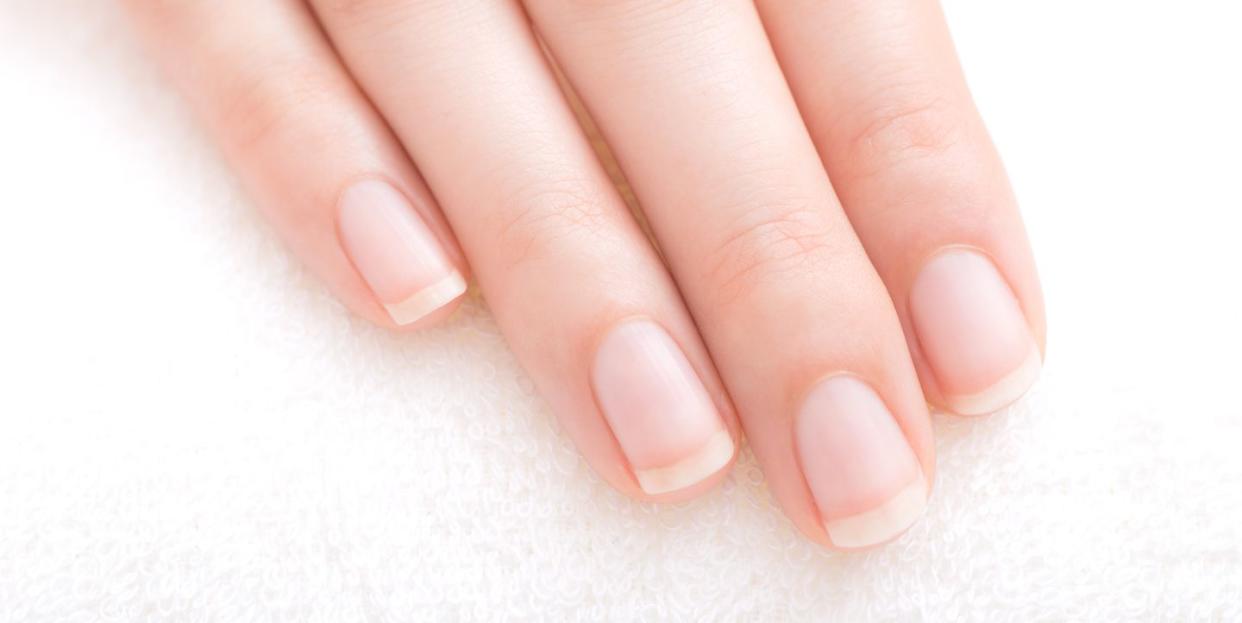Here's How to Remove Gel Nail Polish at Home, Without Damaging Your Natural Nails

You treated yourself to a lovely gel manicure a few weeks ago and now you can’t get to the salon to have that polish removed. Don’t worry—you can totally take gel polish off at home. It just takes patience and carefulness as any damage to your nail plates can impact the sensitive nail beds they protect and potentially lead to infections. While professional removal is obviously the best option, just follow the instructions below to remove gel polish on your own. It all comes down to whether you’re dealing with hard gel or gel polish. “Hard gel is a light curable product that’s not acetone- or water-soluble. This means that the only way to remove it is to file it,” says Martyna Bryzerk, an educator with Indigo Nails. “Gel polish is a product that can be dissolved with acetone, but this strongly weakens the nail plate and is safe to remove by filing.” So gather your tools, turn on that Netflix show you’ve been bingeing, and get to it.
1. Use a nail file to shorten the length of the nail extensions.
An electric nail file works best, but if you don’t have one, don’t know how to use one, or don’t feel comfortable using one, a manual nail file will work—it’s just a lot of work. “It’s best to shorten them to a natural oval shape instead of an almond or square shape in order to protect them from being caught, broken, and overloaded,” says Bryzerk.
2. Remove 80% of the gel part that’s on top of your natural nail with a file.
Use a file that has a gradation of 100 or 180 grit, but it doesn’t need to be perfect. “Leaving product residue will strengthen the natural nail plate,” advises Bryzerk. Be extra careful around the regrowth area at the base of your nail and use a file with a softer gradation for that area.
3. When the surface seems thin enough, smooth it out.
Do this gently with a buffer or nail block. Then wash your hands and finish with cuticle oil and a nail strengthening product.
1. Start by using a nail file to shorten the length of the nail extensions.
Again, an electric file is the best tool for this job, but it needs to be used with care.
2. Remove most of the gel polish that’s on top of your natural nail with a file.
Use a file that has a gradation of 100 or ideally, 180 grit. “Work very gently close to the natural nail plate,” warns Bryzerk.
3. When most of the gel is gone, polish nails with a buffer.
If you’re satisfied after this step, wash your hands and follow with cuticle oil and a nail strengthening product—you’re all set!
4. If residue remains and you’re afraid to over-file…
Apply a clear top coat to your nails and let it dry. Then soak cotton swabs in acetone nail polish remover, place one over each nail, and wrap it tightly with a small square of aluminum foil. Wait 5 to 10 minutes and then remove the foil, one finger at a time, and gently scrape away the softened gel using a wooden stick. Repeat this process until no gel remains. “How long this takes will depend on the thickness of the layer and also the product itself as some hybrids dissolve faster than others,” says Bryzerk.
Support from readers like you helps us do our best work. Go here to subscribe to Prevention and get 12 FREE gifts. And sign up for our FREE newsletter here for daily health, nutrition, and fitness advice.
You Might Also Like

